Biopharmaceutics Lecture 2 Notes PDF

| Title | Biopharmaceutics Lecture 2 Notes |
|---|---|
| Author | Denise David |
| Course | Therapeutics, Disease, Responding to Symptoms, Medicinal Chemistry |
| Institution | University of Kent |
| Pages | 3 |
| File Size | 150.2 KB |
| File Type | |
| Total Downloads | 8 |
| Total Views | 139 |
Summary
drug delivery, pharmaceutics...
Description
BIOPHARMACEUTICS Pharmacokinetics ● ●
The study of what the body does to a drug It is composed of the following processes − Absorption − Distribution − Elimination/excretion − Metabolism
Bioavailability ● ●
The EXTENT and the RATE to which a drug substance or its therapeutic moiety is delivered from a pharmaceutical form into the general circulation It can be broken down into 2 forms: − ABSOLUTE bioavailability – the amount of drug from a formulation that reaches the systemic circulation relative to an IV dose − RELATIVE bioavailability – the amount drug from a formulation that reaches the systemic circulation relative to a different formulation
Biopharmaceutical Classification System (BCS) ● This is useful to know (not examined) if a drug is classed in group IV it is as if you are trying to dissolve ROCKS then the molecules POLYMORPH is studied which can change it to group III and in some cases II. ● Polymorph – the same chemical structure and pharmacodynamics but it has different physicochemical factors
pH Values of Different Body Compartments ● ● ● ● ● ●
Stomach pH = 1-3 Duodenum pH = 5-6 pH increases gradually in the jejunum Ileum pH = 7-8 Blood pH = 7.4 This is important as the way in which a drug is formulated is dependent on where in the body the drug is needed to be dissolved → absorbed
Transit of Pharmaceuticals in GI Tract: Stomach ● ●
●
Gastric EMPTYING TIME = 5min – 2hrs Motility pattern is called INTERDIGESTIVE MYOELECTRIC CYCLE in fasting state Remember the DURATION of the phases
Metabolism – biotransformation
BIOPHARMACEUTICS
●
●
Metabolites are formed after biotransformation and are generally MORE POLAR and therefore more easily IONISED compounds compared to the original drug, so these metabolites can be EXCRETED from the body easily The following organs perform biotransformation: − Liver (the most important organ for biotransformation) − Lungs − Kidney − GI System − Placenta − Adrenal glands − Skin − CNS − Blood Formulation Factors Affecting Oral Absorption
Solutions ●
● ● ●
●
For drugs that are water soluble and chemically stable in Aq solution, formulation as a solution normally eliminates the dissolution step and presents the drug in the most readily available form for absorption However, when considering POORLY SOLUBLE drugs that have had their Aq solubility increased by creating a SALT for instance can result in the precipitation of the drug in the gastric fluid. Similarly the exposure of an Aq solution of a salt of a WEAK ACIDIC compound to gastric pH can also result in PRECIPITATION of the free acid from the drug In most cases the EXTREMELY FINE NATURE of the resulting precipitate permits a more rapid rate of dissolution than if the drug had been administered in other forms of oral dosage forms. But for some drugs this precipitation can have a major effect on BA This difference was shown in an EXPERIMENT where the same dose of a drug was given to dogs in 3 different solution formulation and they all had varying BA
Suspensions ● ● ●
These are useful for administering an INSOLUBLE or POORLY H2O SOLUBLE drug. The absorption of this dosage form is DISSOLUTION RATE LIMITED The oral administration of an Aq suspension results in a LARGE SURFACE area being immediately created in the stomach this facilitates dissolution and hence absorption. The following are factors that that are associated with the formulation of Aq suspension dosage forms that can influence BA of drugs from the GI tract − Particle size and effective SA of the dispersed drug − The crystal form of the drug − Any resulting complexation i.e. the formation of a non-absorbable complex between the drug and an excipient such as the SUSPENDING AGENT − The inclusion of a surfactant − The viscosity of the suspension
Liquid-Filled Capsules ● ●
POORLY H2O SOLUBLE drugs may exhibit greater bioavailability when placed into a capsule The release of the drug is affected by DISSOLUTION and B REAKING OF THE SHELL
BIOPHARMACEUTICS
●
●
●
Non-Aq vehicles can be either WATER-MISCIBLE in which case this will occur: − When it dissolves and/or disperses readily in the GI fluids liberating the drug as either a solution or fine suspension, which is then rapidly absorbed Non-Aq vehicles can also be WATER-IMMISCIBLE in which case this will occur: − Dispersion is facilitated by emulsifiers included in the vehicle, and also by BILE. Once dispersed the drug may end up as a SOLUTION, FINE SUSPENSION or NANO/MICROEMULSION. Drug has to then partition out of the oil droplet or absorbed by fat absorption process if it is digestible. The following are factors that that are associated with the formulation of Liquid-filled dosage forms that can influence BA of drugs from the GI tract − SOLUBULITY of drug in the vehicle − Particle SIZE of the drug (if suspended in the vehicle) − The NATURE of the vehicle i.e. hydrophilic or lipophilic (and whether the lipophilic vehicle is digestible or not) − The inclusion of a SURFACTANT − VISCOCITY and COMPLEXATION with excipients
Powder-Filled Capsules ● ● ●
●
●
The BA of this dosage form is in some cases BETTER or the SAME as a tablet The rapid DISPERSION after the release creates a relatively large SA of drug to be exposed to the GI fluids DISSOLUTION RATE of a capsule formulation is dependent on dissolution rate of the shell, the rate of penetration of the GI fluid into the encapsulated mass, the rate of deaggregation of the mass and the dissolution rate of the particles. Penetration of GI fluids into the mass depends on: − EXCIPIENTS – hydrophilic excipients increase penetration rate − Pack DENSITY (and porosity) of the mass − WETTABILITY of the drug – which can be improved by a surfactant The following are factors that that are associated with the formulation of powder-filled dosage forms that can influence BA of drugs from the GI tract − The SURFACE AREA and particle SIZE of the drug − The use of the SALT form − The CRYSTAL form of the drug − The chemical STABILITY of the drug...
Similar Free PDFs

Biopharmaceutics Lecture 2 Notes
- 3 Pages

Lecture notes, lecture 2
- 3 Pages

2 - Lecture notes 2
- 5 Pages

Lecture notes, lecture Chapter 2
- 11 Pages
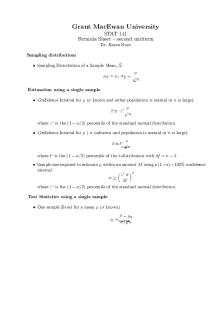
Lecture notes, lecture formula 2
- 1 Pages

2 Biodiversity - Lecture notes 2
- 33 Pages

Chapter 2 - Lecture notes 2
- 30 Pages
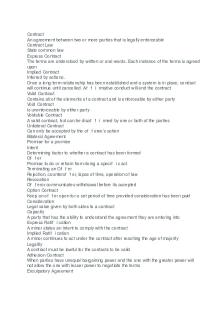
Blaw 2 - Lecture notes 2
- 4 Pages

Chapter 2 - Lecture notes 2
- 4 Pages
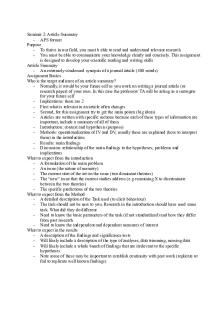
Seminar 2 - Lecture notes 2
- 2 Pages
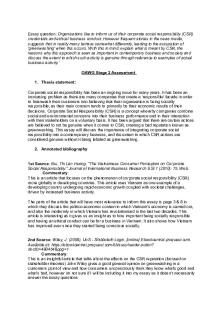
Stage 2 - Lecture notes 2
- 3 Pages
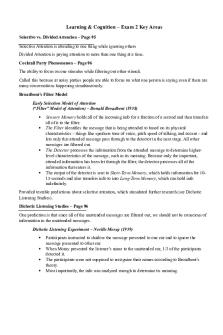
Exam 2 - Lecture notes 2
- 5 Pages
Popular Institutions
- Tinajero National High School - Annex
- Politeknik Caltex Riau
- Yokohama City University
- SGT University
- University of Al-Qadisiyah
- Divine Word College of Vigan
- Techniek College Rotterdam
- Universidade de Santiago
- Universiti Teknologi MARA Cawangan Johor Kampus Pasir Gudang
- Poltekkes Kemenkes Yogyakarta
- Baguio City National High School
- Colegio san marcos
- preparatoria uno
- Centro de Bachillerato Tecnológico Industrial y de Servicios No. 107
- Dalian Maritime University
- Quang Trung Secondary School
- Colegio Tecnológico en Informática
- Corporación Regional de Educación Superior
- Grupo CEDVA
- Dar Al Uloom University
- Centro de Estudios Preuniversitarios de la Universidad Nacional de Ingeniería
- 上智大学
- Aakash International School, Nuna Majara
- San Felipe Neri Catholic School
- Kang Chiao International School - New Taipei City
- Misamis Occidental National High School
- Institución Educativa Escuela Normal Juan Ladrilleros
- Kolehiyo ng Pantukan
- Batanes State College
- Instituto Continental
- Sekolah Menengah Kejuruan Kesehatan Kaltara (Tarakan)
- Colegio de La Inmaculada Concepcion - Cebu



